Sarcomyxa serotina
Scientific name: Sarcomyxa serotina (Pers.) P. Karst
Derivation of name: Serotin- means "late" and refers to the
appearance of this mushroom late in the season.
Synonyms: Panellus serotinus (Pers.) Kuhner;
Pleurotus serotinus (Pers.) P. Kumm.
Common name(s): Late fall oyster; Green oyster.
Phylum: Basidiomycota
Order: Agaricales
Family: Mycenaceae
Occurrence on wood substrate: Saprobic; solitary or in
overlapping clusters on deciduous and conifer wood; October
through December.
Dimensions: Caps 2.5-10 cm wide; stipes 0.5-2 cm long
and 0.5-1 cm thick.
Cap: Slimy when moist; margin incurved; yellowish-green
with violet tones to purplish to dark brown to brownish-green
to silvery-gray or combinations of these colors but not black
or white.
Gills: Attached to subdecurrent; yellow-white to
orange-yellow, turnng brownish with age.
Spore print: Whitish or yellowish.
Stipe: Lateral, stout, stublike or absent; yellowish to
brownish.
Veil: Absent.
Edibility: Edible.
Comments: The variation in cap colors is quite
distinctive.
This mushroom almost always fruits only after the
first frosts of the season. Although considered edible, it is
quite tough and must be cooked a long time over low heat.
More information at MushroomExpert.com
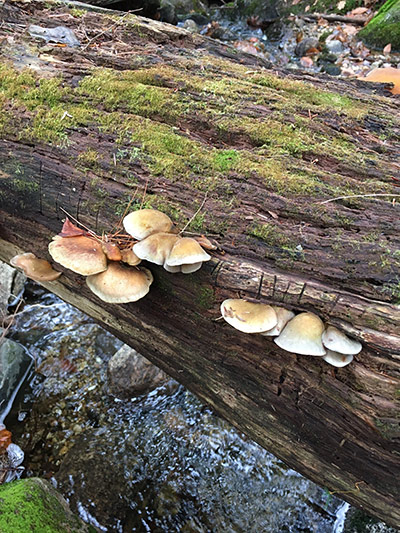
Figure 1.
Sarcomyxa serotina fruiting on a log in New
Hampshire on November 15, 2021. This species is aptly named
late fall oyster.
Photo © Gary Emberger.

Figure 2. Close-up of the cluster to the left in Figure 1. In
addition to the brownish cap coloration, there was a trace
of
greenish-violet coloration near the margin - unfortunately
more evident in the field than in this photograph.
Photo © Gary Emberger.
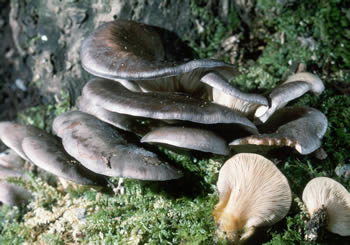
Figure 3. In contrast to the brownish caps
in Figure 2.,
these specimens have a distinct silvery-violet coloration
on the caps. The gills of young specimens are yellowish
or whitish.
Photo © William Roody.
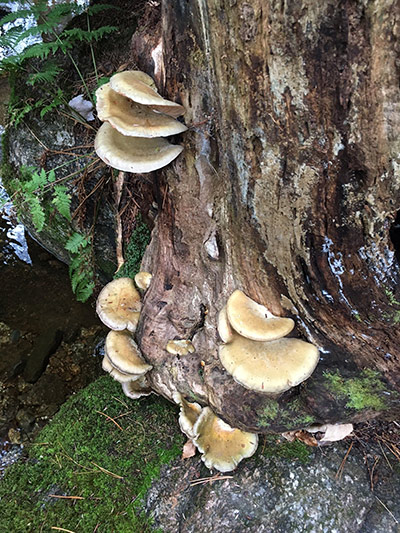
Figure 4. Late fall oyster growing in overlapping clusters on a
stump.
Photo © Gary Emberger.

Figure
5.
The gills of Sarcomyxa serotina turn brownish with
age. The browning often starts on the edges of the gills. The
gills are attached to a short, stub-like lateral stipe.
Photo © Gary Emberger.
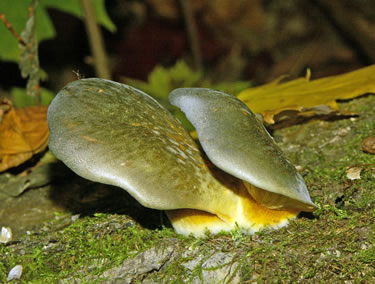
Figure 6. The lateral stipe and odd mix of greenish and
yellowish
colors are quite
visible in this specimen.
Photo © Dianna Smith.
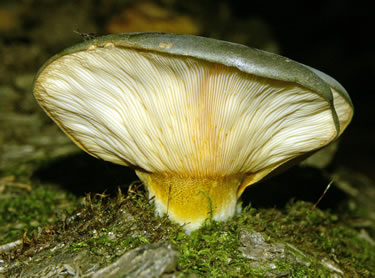
Figure 7. Underside of the specimen in Figure 6.
Photo © Dianna Smith.